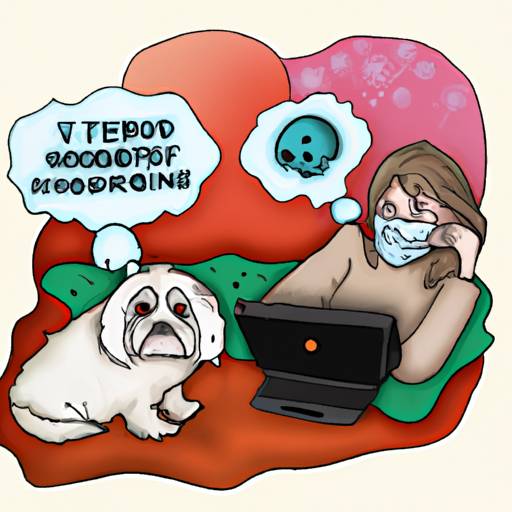Understanding Pyometra
You may find yourself asking, “What is pyometra?” Pyometra is a serious, life-threatening condition that can affect female dogs. It is an infection in the uterus that occurs due to hormonal changes in the female’s reproductive system.
Whether you’re an experienced dog owner or new to the world of pet parenthood, understanding the causes and symptoms of this condition is crucial. Pyometra can strike without warning, turning your previously vibrant and lively pet into a lethargic and unwell companion.
How Pyometra Develops
- Hormonal Changes: After a dog goes through a heat cycle, her body begins to prepare for a potential pregnancy. This involves the thickening of the uterine lining and the release of progesterone. If pregnancy does not occur, the uterus eventually returns to its normal state. However, repeated cycles without pregnancy can lead to cysts in the uterine lining.
- Bacterial Infection: The thickened uterine lining creates an ideal environment for bacterial growth. The most common culprit is E. coli, which generally enters the uterus during the dog’s heat cycle.
- Formation of Pyometra: The combination of hormonal changes and bacterial infection results in pyometra. The uterus fills with pus, and if not treated promptly, can rupture, spreading the infection throughout the dog’s body.
Understanding this process can help you, as a caring and vigilant caregiver, to identify potential risks and intervene early.
Key Symptoms to Watch For
Pyometra symptoms can be subtle at first, evolving over a few weeks. Keep an eye out for the following:
- Increased thirst and urination
- Decreased appetite
- Lethargy
- Vomiting
- Abdominal swelling
- Fever
- Discharge from the vagina
Preventing Pyometra
The best way to prevent pyometra is through spaying your dog, which involves removing the uterus and ovaries. This eliminates the hormonal fluctuations that contribute to pyometra. If you choose not to spay your dog, regular check-ups and close monitoring of her behavior and physical condition are essential.
Treatment Options
| Treatment | Description |
|---|---|
| Surgical | Complete removal of the uterus and ovaries. |
| Medical | Administration of drugs to reduce the size of the uterus and eliminate the infection. |
Both methods have their pros and cons, and the appropriate treatment will depend on the dog’s overall health, age, and the severity of the pyometra.
Frequently Asked Questions
1. Can male dogs get pyometra?
No, only female dogs are susceptible to pyometra since it involves the uterus.
2. Is pyometra contagious?
No, pyometra is not contagious. It’s a hormonal condition exacerbated by bacterial infection.
3. Can pyometra be prevented?
Yes, spaying your dog is the most reliable form of prevention.
4. How is pyometra diagnosed?
Your vet will likely use a combination of physical examination, blood tests, and ultrasound to diagnose pyometra.
5. How soon after diagnosis should treatment begin?
Immediate treatment is crucial as pyometra can quickly become life-threatening.
Remember, as a caregiver, your dog’s health is in your hands. Stay vigilant, stay informed, and seek veterinary help at the first sign of trouble.



